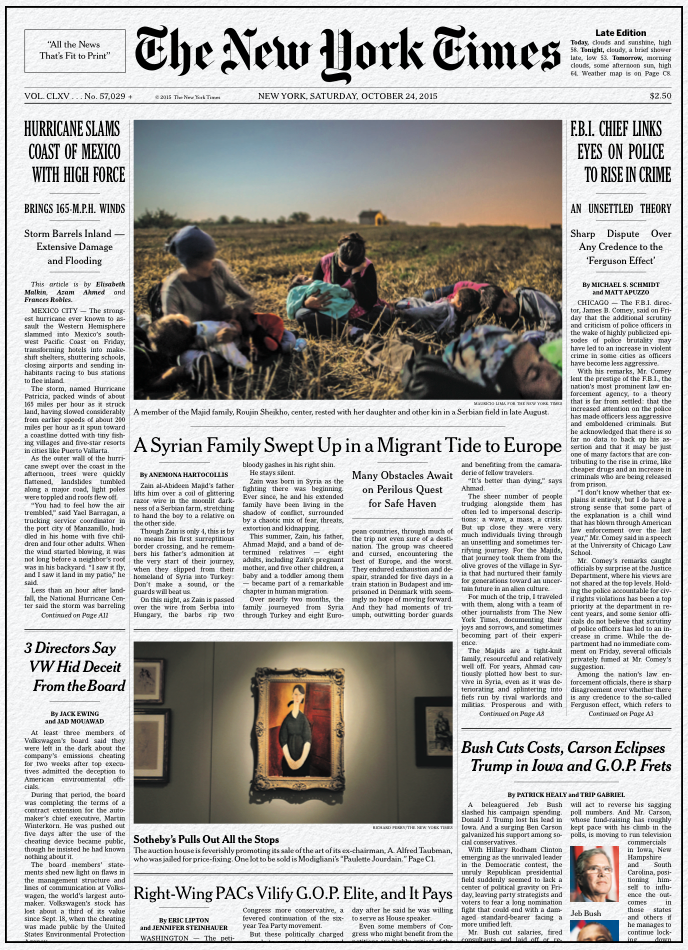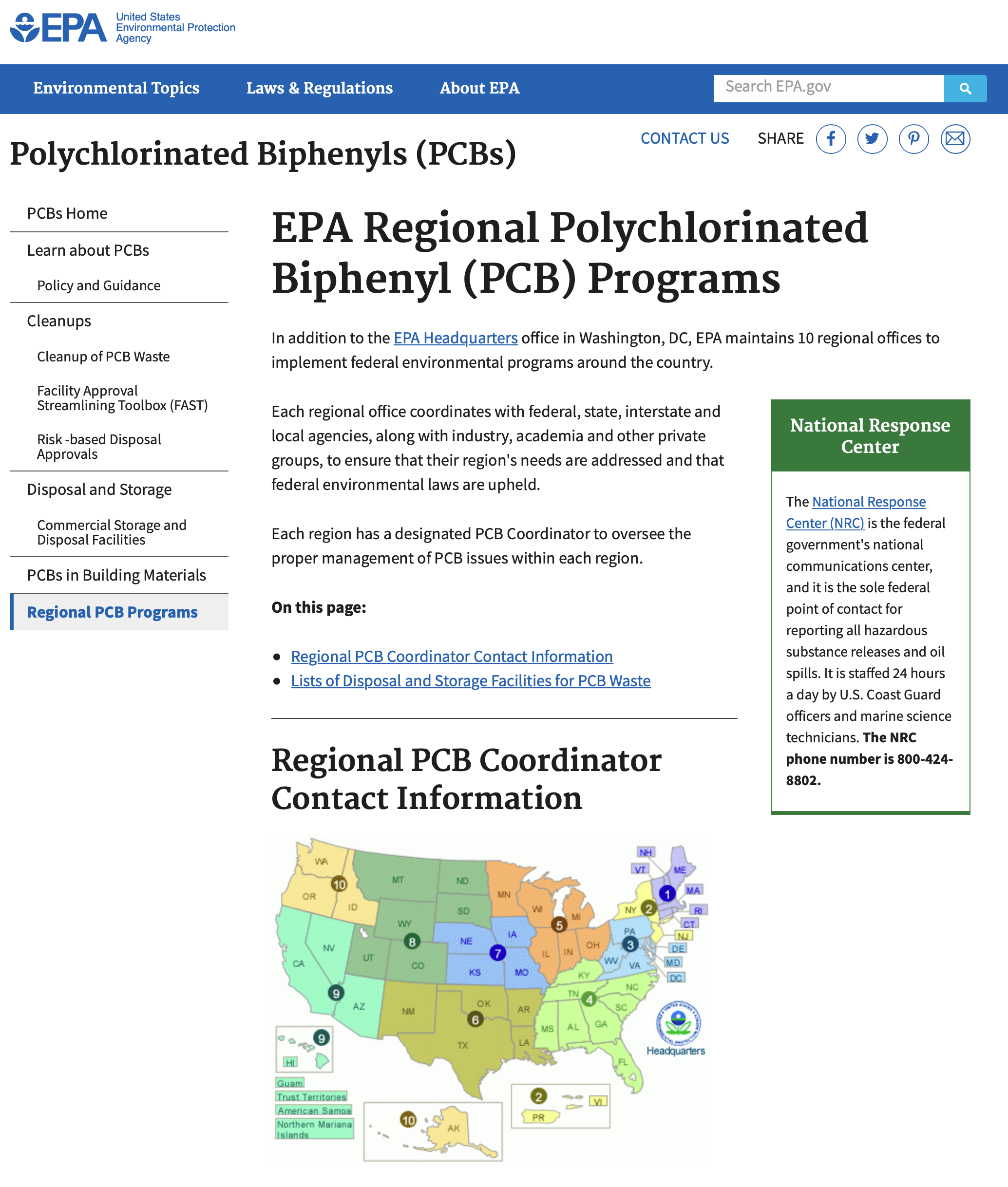Secondary Sources
Newspapers, Magazines, Public Media, Textbooks
- While secondary sources do not go through a peer review process, they are reviewed by authors, editors and producers prior to publication to ensure high quality.
- Secondary sources report on and interpret results that are presented in primary sources.
- Secondary sources of information are typically easier to read and understand when compared to primary source journal articles.
- Secondary sources typically do not provide the level of detail that is reported in a primary source.
Secondary Sources
Other sources that may be used for a scientific poster are secondary sources, which generally refer to newspapers (Fig. 14), radio programs, news programs, documentaries, videos, magazines and some government sources. Secondary sources report on and interpret results that have been presented in primary sources. Secondary sources generally have not been peer-reviewed, however, they have been reviewed by editors, writers and producers prior to publication because the publisher wants to maintain a high degree of integrity with their work and publications.
Just because a secondary source has not been peer-reviewed does not mean that it is an inferior source of information compared to peer-reviewed journal article. Many secondary sources are very well respected and excellent sources of information. These publications (e.g., newspaper, magazine, documentary) are used to provide information that has originally been presented elsewhere (e.g., in a journal article, or during a talk at a professional conference). These articles are often reviewed by an editor(s) prior to publication to ensure that the information is credible and the story is accurate. Just as is the case for journals, a strong reputation for accurately reporting facts and information is one of the main goals that publishers strive to achieve. Those that have developed a trust with the general public because they have a strong reputation for unbiased reporting are generally well respected as sources of trustworthy information. Secondary sources are usually easier to read and easier to understand when compared to primary sources.
Highly respected newspapers (secondary sources) like the New York Times, the Wall Street Journal and the Washington Post have an extensive editorial staff and professional writers to ensure high quality articles. In addition to newspapers, textbooks, magazines (e.g., National Geographic, Scientific American, Smithsonian), public broadcasters (e.g., NPR, PBS), broadcast television networks (e.g., ABC, CBS, NBC, Fox) are all excellent secondary sources.
Figure 14. Secondary Source Newspaper

Examples of Secondary Sources
- New York Times http://www.nytimes.com (Fig. 14)
- National Geographic http://www.nationalgeographic.com
- Mainstream science textbooks
- National Public Radio http://npr.org
- PBS Nature http://www.pbs.org/wnet/nature/
- PBS NOVA http://www.pbs.org/wgbh/nova/
- PBS FRONTLINE http://www.pbs.org/wgbh/frontline/
- Scientific American http://www.scientificamerican.com
- Washington Post https://www.washingtonpost.com
- ABC News https://abcnews.go.com
U.S. Government Sources
U.S. government agencies and departments can also be excellent sources of scientific data and information. These agencies publish both primary sources and secondary sources of information. Several examples that are useful to science and technology are listed below. Each agency or department focuses on a particular field. For example, the USDA focuses on agriculture and NOAA focuses on weather and climate.
- Centers for Disease Control and Prevention (CDC) http://www.cdc.gov
- National Aeronautics and Space Administration (NASA) https://www.nasa.gov
- National Institutes of Health (NIH) http://www.nih.gov
- National Oceanic and Atmospheric Administration (NOAA) http://www.noaa.gov
- National Park Service (NPS) http://www.nps.gov
- Department of Agriculture (USDA) http://www.usda.gov
- Department of Energy (DOE) http://www.energy.gov
- Department of Interior (DOI) https://www.doi.gov
- Environmental Protection Agency (EPA) http://www.epa.gov
- Fish and Wildlife Service (FWS) http://www.fws.gov
- Food and Drug Administration (FDA) http://www.fda.gov
- Geological Survey (USGS) http://www.usgs.gov
- National Science Foundation (NSF) http://www.nsf.gov
These agencies and departments employ thousands of scientists and engineers who conduct research and then report their finding back to the general public. They communicate their discoveries and results with the general public through technical reports, guidelines, recommendations, podcasts, seminars, presentations and primary source peer-reviewed journal articles.
Figure 15. EPA Website

For example, Figure 15 shows how the U.S. Environmental Protection Agency (EPA) informs the public about the dangers of polychlorinated biphenyls (PCBs) and their efforts to cleanup PCB waste in the USA. This webpage, shown in Figure 15, is constantly updated with the EPA’s most recent data, results and discoveries so that people can stay informed and make informed decisions in their daily lives. This webpage would be considered a secondary source. Links to primary source journal articles, secondary source guidelines and fact sheets and regional PCB clean up programs are all provided on the website (Fig. 15).
